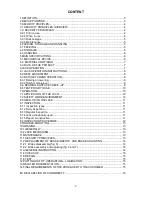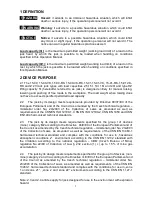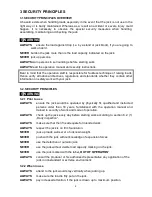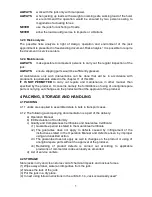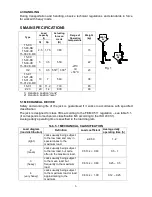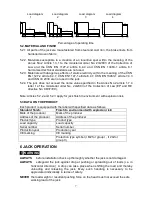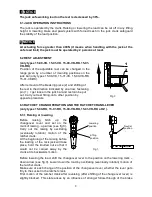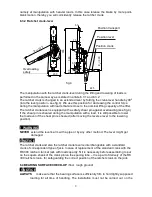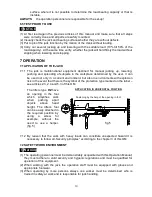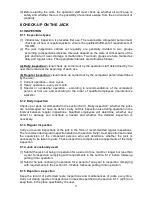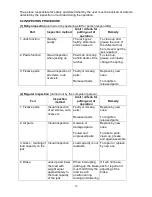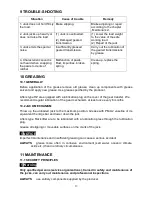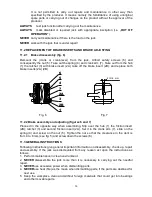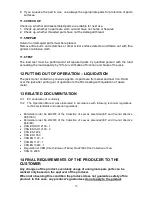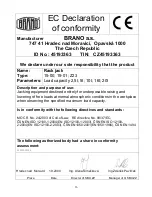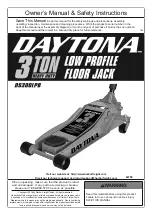
9
200
R
= 5
25
70
3
6
0
3,5t
8
3
5t
R
=
3
0
0
Poloha KLIKA (R )
Poloha PÁKA (R )
Poloha TRANSPORT
k
p
7
6
5
225
Pojistka proti přetížení
p
k
fig.4
Position transport
Overloading
safety
Position lever
Position crank
namely at manipulation with heavier loads. In this case release the brake by more point-
blank motion, thereby you will coincidently release the ratchet crank.
6.3.2 Ratchet crank-lever
The manipulation with the ratchet crank-lever during the lifting and lowering of loads is
performed in the same way as is stated in article 6.3.1 and 6.3.2.
The ratchet crank is changed to an extended lever by folding the crank-lever handle by 90
0
(into the lever position - see fig.4). We use this position for decreasing the control force
during the manipulation with loads that are close to the nominal lifting capacity of the lifter.
The ratchet crank-lever is equipped with a safety shear pin against overloading (see fig.4)
If the shear pin is sheared during the manipulation with a load, it is still possible to lower
the load even if the shear pin is sheared (after moving the reverse lever to the lowering
position).
! WARNING
NEVER
extend the lever’s arm with a pipe or by any other method. The lever might get
damaged
! NOTICE
The ratchet crank and also the ratchet crank-lever is interchangeable with a standard
crank of correspondent type of jack. In case of replacement of the standard crank with the
RK 300 ratchet crank at jack with load capacity 5t it is necessary before assembling to put
on the square shank of the crank pinion the spacing tube – it is a part of delivery of the RK
300 ratchet crank– for safeguarding the correct position of the ratchet crank on the jack.
6.4 BEARING SURFACE CHECK-UP
/floor, rough ground/
! NOTICE
ALWAYS
make sure that the bearing surface is sufficiently firm to hold tightly supposed
loading for all time of handling. The installation must not be carried out on the


